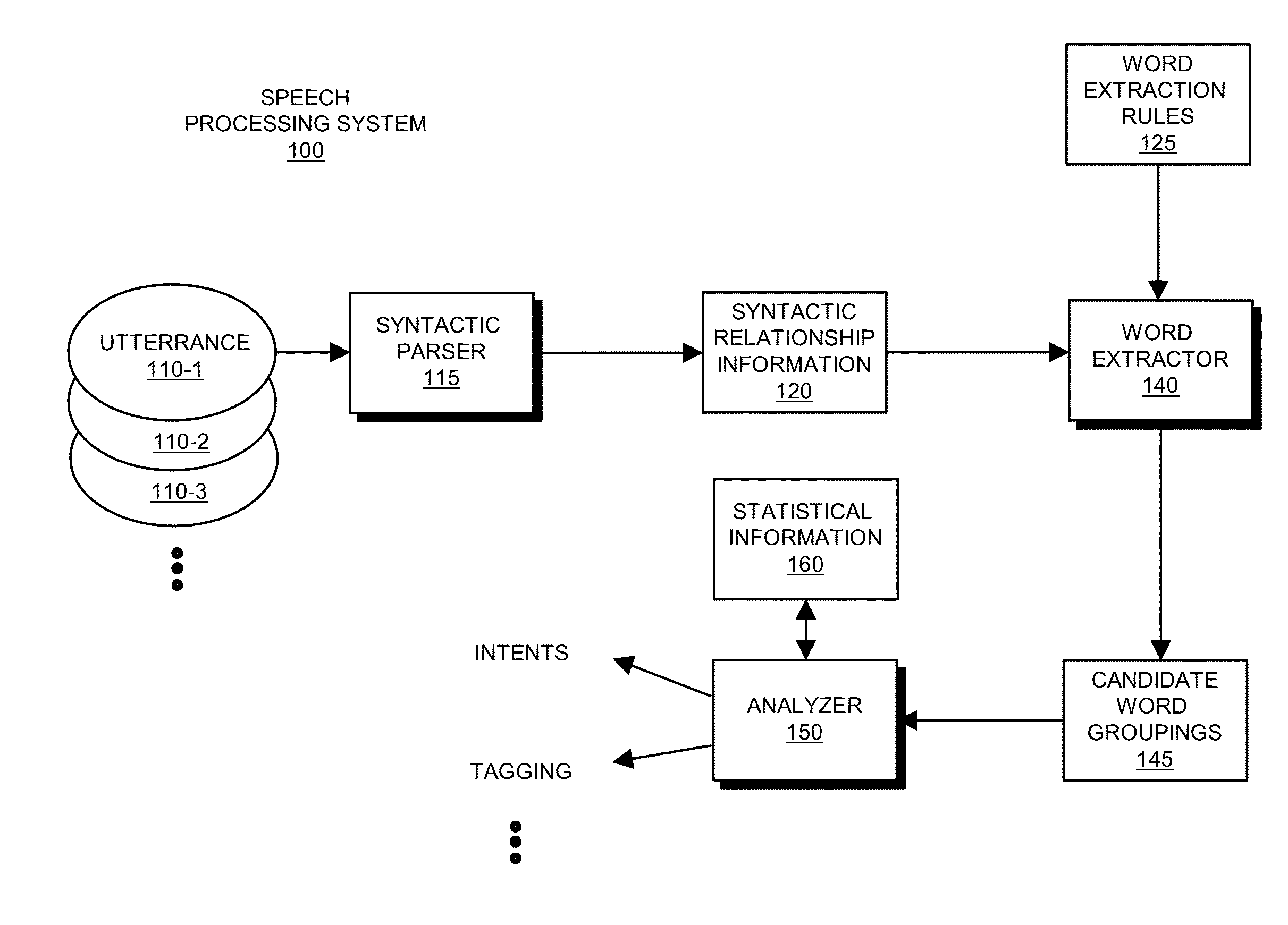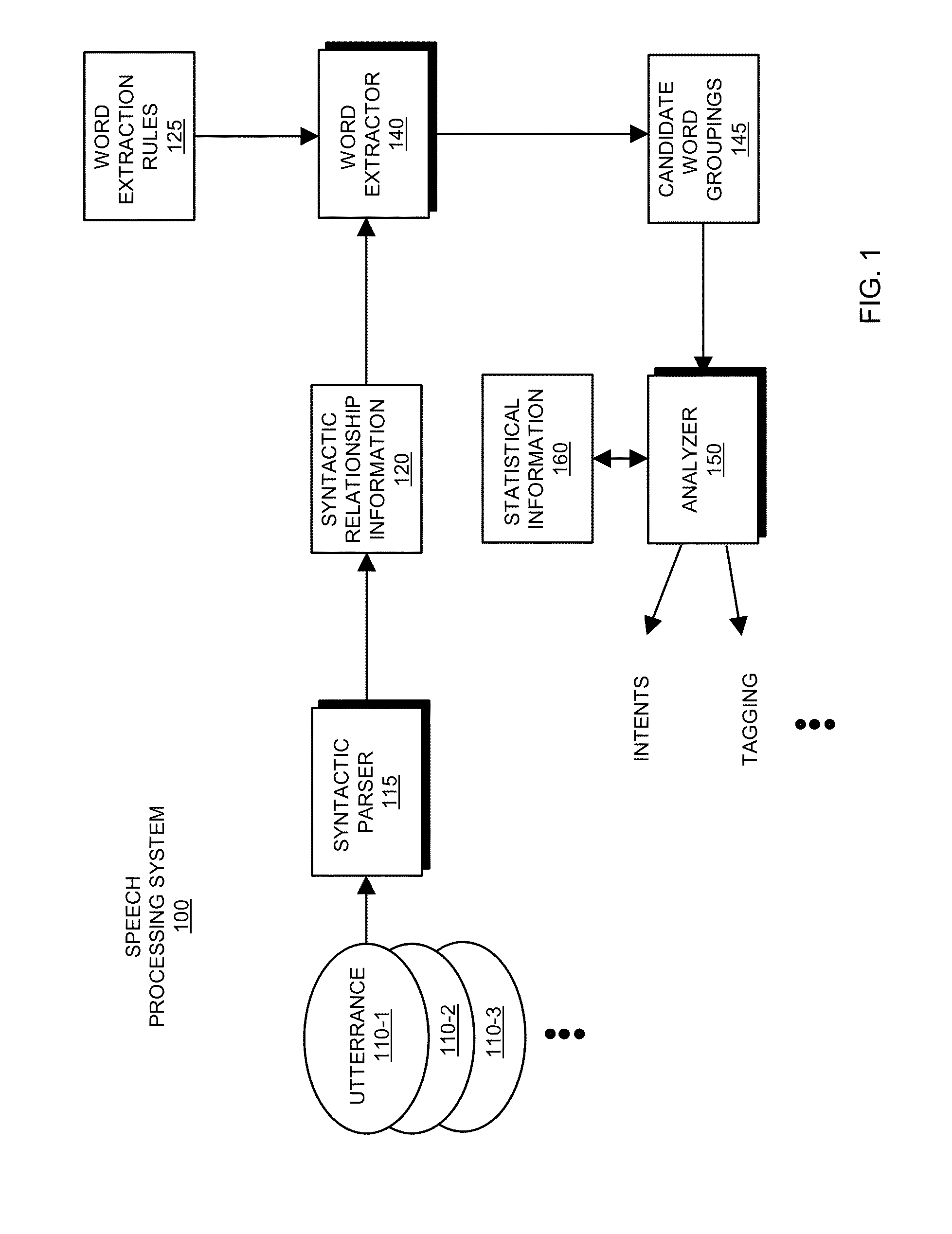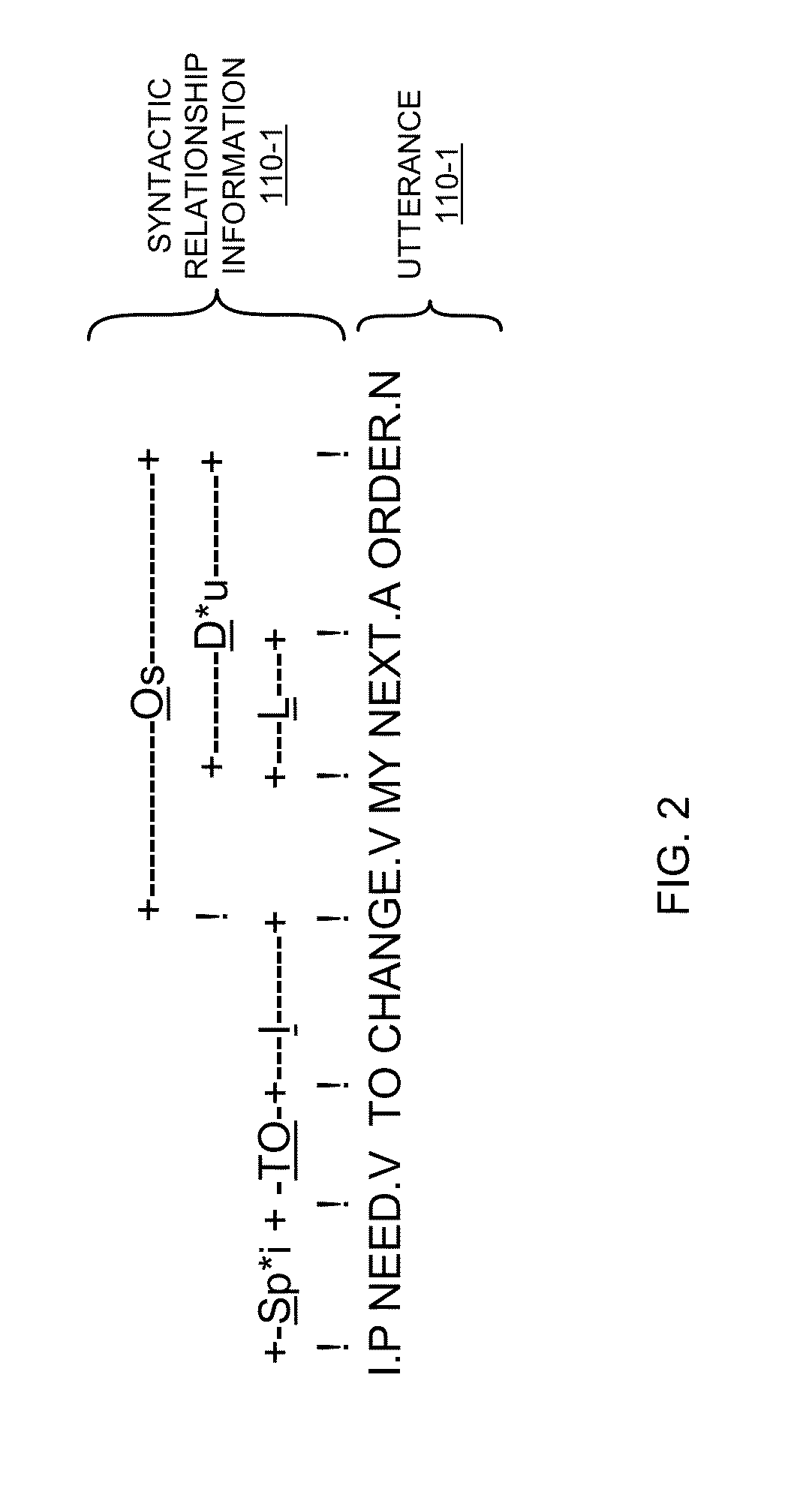Intent mining via analysis of utterances
a technology of intent mining and utterances, applied in the field of intent mining via utterance analysis, can solve the problems of difficult to determine the intended meaning of the utterance, low classification accuracy and drawbacks of conventional speech recognition systems
- Summary
- Abstract
- Description
- Claims
- Application Information
AI Technical Summary
Benefits of technology
Problems solved by technology
Method used
Image
Examples
Embodiment Construction
[0041]According to one embodiment, a speech processing system includes a syntactic parser, a word extractor, word extraction rules, and an analyzer. The syntactic parser of the speech processing system parses the utterance to identify syntactic relationships amongst words in the utterance. In accordance with the syntactic relationship information, the word extractor utilizes the word extraction rules to identify groupings of related words in the utterance that most likely represent an intended meaning of the utterance. The analyzer in the speech processing system maps each set of the sets of words produced by the word extractor to a respective candidate intent value to produce a list of candidate intent values for the utterance. The candidate intent values represent a possible intended meaning of the utterance. The analyzer is configured to select, from the list of candidate intent values (i.e., possible intended meanings) of the utterance, a particular candidate intent value as bei...
PUM
 Login to View More
Login to View More Abstract
Description
Claims
Application Information
 Login to View More
Login to View More - R&D
- Intellectual Property
- Life Sciences
- Materials
- Tech Scout
- Unparalleled Data Quality
- Higher Quality Content
- 60% Fewer Hallucinations
Browse by: Latest US Patents, China's latest patents, Technical Efficacy Thesaurus, Application Domain, Technology Topic, Popular Technical Reports.
© 2025 PatSnap. All rights reserved.Legal|Privacy policy|Modern Slavery Act Transparency Statement|Sitemap|About US| Contact US: help@patsnap.com



